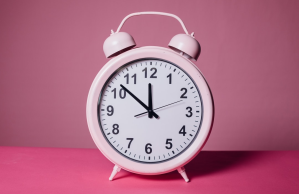Dreams are weird: they’re these alternative realities that feel freakishly real until we finally realize we’re just dreaming or we wake up. I remember this one week where I had a significantly weird dream just about every night: in just 7 days, I fought anacondas, rode a train into the future, got chased by a man with a machete, and became a spy. I know, weird. And of course, I tried to put meaning to these bizarre dreams, because I must have had them for a reason—right?
We all try to assign meaning to our dreams. Someone was chasing you? That must mean you’re avoiding or running from something. You had a dream about flying? That’s a sign that it’s time to let go of whatever’s holding you back! These are common beliefs, but if we’re being technical, dreams are just your brain’s way of cleaning out the day’s events and preparing for the next—they’re not typically representative of our real lives, nor are they meant to reveal any information about our awake selves. Still, we’re intrigued by our dreams and seek to understand them better—in fact, researchers from the University of Adelaide have just recently gotten a better look at lucid dreaming.
In their study “Reality testing and the mnemonic induction of lucid dreams: Findings from the national Australian lucid dream induction study” the team of researchers found that a specific combination of techniques can increase an individual’s chances of lucid dreaming, whereas the dreamer is aware that they’re dreaming and can control what’s happening. Previous research into lucid dreaming hasn’t produced promising or notable results, which is what led to the team’s investigation.
To better understand lucid dreaming, the researchers experimented with three different groups of participants and three different lucid dreaming techniques. The first technique is called reality testing: this is where the individual checks his or her environment throughout the day to see if they’re awake or dreaming. The second technique was “wake back to bed,” whereas you wake up for a short period of time after sleeping for five hours and then go back to sleep in order to enter REM or the rapid eye movement sleep phase—dreams are more likely to occur here. And then the third and final technique they used is called MILD or mnemonic induction of lucid dreams: here, individuals wake up after five hours of sleep and then go back to sleep with the intention of remembering they are dreaming. They can achieve this by first saying something like, “In my next dream, I will realize I’m dreaming.”
The most exciting results came from combining all three techniques as well as from falling asleep directly after completing the MILD technique: The group of 47 people which combined all three of the aforementioned techniques reached a 17% success rate of inducing lucid dreams over the course of one week; this percentage was significantly higher than in the week these participants didn’t practice any of the techniques. And the success rate of lucid dreaming was even higher (46%) in those who fell asleep within five minutes of practicing the MILD technique.
Dr. Apsy, Visiting Research Fellow in the University’s School of Psychology, explains the effectiveness of the MILD technique: “The MILD technique works on what we call ‘prospective memory’—that is your ability to remember to do things in the future. By repeating a phrase that you will remember you’re dreaming, it forms an intention in your mind that you will, in fact, remember that you are dreaming, leading to a lucid dream,” he says.
These findings confirm that we can, indeed, increase our chances of having a lucid dream. Doing so will surely make a dream feel more realistic, but remember: dreams are simply our brain’s way of clearing out our minds. They feel so real because they’re made up of the same building blocks of life—our relationships, our work, our stresses, our joys. But at the end of the day, they’re just storylines written by our consciousness.
Source: University of Adelaide. “Want to Control Your Dreams? Here’s How You Can.” NeuroscienceNews. NeuroscienceNews, 19 October 2017.
<http://neurosciencenews.com/lucid-dream-control-7769/>.
Original Research: Abstract for “Reality testing and the mnemonic induction of lucid dreams: Findings from the national Australian lucid dream induction study” by Aspy, Denholm J., Delfabbro, Paul, Proeve, Michael, and Mohr, Philip in Dreaming. Published online September 2017 doi:10.1037/2Fdrm0000059












